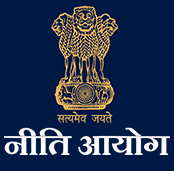Energy Swaraj: Geospatial Energy Map of India Presents Immense Potential and Opportunities
Government responsibility for energy is distributed across five Ministries in the Government of India. However, technology has now enabled the interchangeability of energy sources, and more efficient and cleaner energy sources are gradually replacing traditional, polluting sources of energy (e.g., electricity instead of fossil fuels for transport and/or cooking). In this context, the Geospatial Energy Map of India (https://vedas.sac.gov.in/energymap) launched by NITI Aayog recently in collaboration with ISRO and Ministries of Power, Coal, Petroleum and Renewable energy to present all energy-related information in one web portal is a landmark in India’s energy sector. This web portal can facilitate more integrated planning and management that are key to prudent investment decisions in India’s energy future. The geospatial features of the map enable visualization, assessment, planning, and policy decisions not only across the diverse energy sector but also in related sectors like transport, manufacturing, environment, health. Some examples of the potential use of this map are as follows:
- While electricity is easily and quickly transmitted across grids, other energy products like Petroleum products and Ethanol involve a non-trivial transport cost. A GIS map can be used to plan for better logistics management of transport of energy inputs (coal, lignite, crude oil, biomass) and end products - POL, ethanol, and even electricity to minimize costs and increase distributive efficiencies.
- The GIS energy map already displays data on daily coal production and month-end stocks in thermal power stations. By adding data on the movement of coal through railway wagons, real-time monitoring of coal production and supply for power and industrial use can be achieved. This will help India to avoid a crisis of the kind we recently experienced.
- By matching production centers to areas of utilization, the GIS map can guide locational and investment decisions. For example, since ethanol plants are concentrated in a few states the GIS map can facilitate the location of distilleries in deficit states so that transport costs can be minimized, and local energy demands are met.
- Decisions on setting up of energy infrastructure (like oil or gas pipeline, solar parks) after accounting for ancillary infrastructure can be taken more efficiently in a cost-effective manner by integrating the data on existing grid or sub-stations, roads, railways, demand, and availability of raw material on one web portal since up-to-date data on these facilities is otherwise not easily available.
- The GIS map displays the potential for cleaner energy sources of hydro, bioenergy, solar, wind (onshore and offshore). By analyzing the clean energy generation potential at the district level, we can identify areas with unrealized potential (for example, biomass-based generation in the Northeast, and coastal wind sites).
- The GIS map building exercise can be extended to States, who can add data on local demand, transmission, and distribution networks. By integrating data on the quality of service (such as hours of power interruptions and voltage fluctuations) and consumer complaints, the GIS-based Energy Portal can facilitate higher levels of transparency and accountability in the sticky electricity distribution sector. The GIS-based Energy Portal can also enhance consumer rights by enabling them to choose their electricity service provider from a range of local DISCOMS based on their service quality, wherever multiple electricity distribution companies are available.
- The GIS-based energy portal can also integrate data on sector-wise, locality-wise electricity demand. Information on Microgrids can be added to identify sites of decentralized energy generation and distribution. Given that electricity generation was delicensed in 2003, and distribution is planned to be liberalized, the GIS map can be a useful resource in local-level energy planning.
- Agricultural demand for water and electricity can be mapped to identify pockets for the promotion of KUSUM solar plants.
- By making production, transmission, and distribution more location-specific, the GIS maps can improve efficiency in the energy sector in the country. It can promote the use of sustainable energy, in place of polluting sources, and thus help in a cleaner environment.
- Our electric grids need to become smart, in terms of service quality and cost of power based on time of day. The GIS Energy map will help make this transition to a Smart Grid by matching demand by area, time of day and tariff to generation, and the availability of transmission capacity.
- Adding the price of electricity, subsidies, and Power Purchase Agreements to the map will help India’s electricity consumers (both bulk and retail) to make cost-effective choices.
- Since the GIS Energy map allows layering of satellite data, visualization of night lighting maps overlaid with the spatial distribution of habitations can help the Government to identify habitations with minimal energy access to provide them electricity connections under the Saubhagya scheme.
- By adding block and habitation layers to the GIS Energy map, the correlations between thermal plant locations and local health outcomes (as obtained from Health Management Information System) can be assessed. This will help the Government and local authorities to take timely decisions on the prioritization of technology or fuel upgradation in existing thermal plants, such as the use of cleaner fuels (e.g., washed coal) and the installation of more effective pollution control technologies.
Therefore, the GIS Energy map has the potential to facilitate India's achievement of Sustainable Development Goal (SDG) 7 which is to ensure access to affordable, reliable, sustainable, and modern energy for all. It can thereby help build energy Swaraj, and a foundation for sustainable development in the country.
Dr Rakesh Sarwal was Additional Secretary, NITI Aayog. Views expressed are personal.
***
 National Portal Of India
National Portal Of India 







